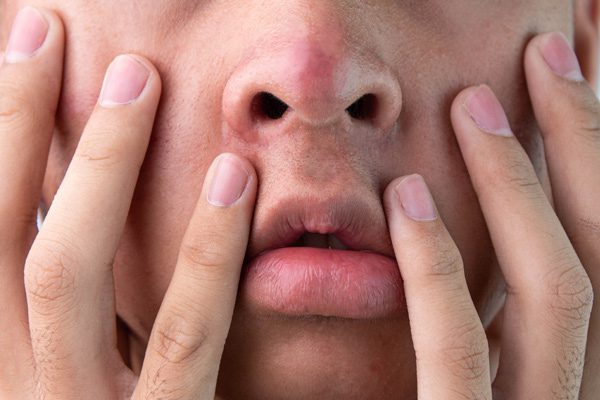Read this if it’s your first time using niacinamide or if you’re getting redness from using a niacinamide product.
Niacinamide is one of two major forms of vitamin B3 (the other being niacin). It’s an important chemical for our cells, as it turns into the coenzymes NADH and NADP to allow cells to function properly, including repairing DNA and encouraging cell turnover. You may not realize it, but you’re ingesting niacinamide every time you eat chicken breast, avocado, and mushroom.
More from Glowing Gorgeous: Find out here the Best Silicone-Free Moisturizers And Why Do You Care
Niacinamide can also be readily absorbed into the skin and has become a ubiquitous skincare ingredient these days. And rightly so; niacinamide is an antioxidant and possesses anti-inflammatory properties, making it a popular ingredient for the treatment of acne and rosacea. In addition to that, it has been shown to erase wrinkles and improve skin elasticity as well as increase the production of ceramide, a natural lipid found on the surface of your skin that reinforces the skin’s ability to lock in moisture and prevent water loss. What’s more, niacinamide also increases cellular turnover, helping to promote the shedding or your outermost layer of dead skin to reveal a new layer of skin from underneath. It is for this reason that you’ll find niacinamide in anti-aging formulas; it can reduce unwanted pigmentation and make aged skin look youthful again. Niacinamide works best when incorporated alongside your usual skincare routine, and you’ll find that niacinamide works well together with other products.
Niacinamide, for all its goodness, can be called a benign ingredient. But is it as innocuous as it is benign? If you google “niacinamide causes redness”, you’ll find a 2017 Asianbeauty subreddit that talks of a horrific allergic reason to niacinamide – “my face was red, especially my cheeks and nose, and my nose had broken out in a weird, clustered way,” wrote one user, after including a 5 percent niacinamide serum in her routine. And she wasn’t alone, either. Dozens of people came out on the thread to say that they too had had bad experiences with niacinamide. So is it true, can niacinamide really irritate your skin?
According to the experts, there are three causes that a product containing niacinamide can cause redness: allergic reaction, an overly high concentration, or simply another ingredient in the formula that you’re sensitive to. The vast majority of people are not allergic to niacinamide, so the chances that you are are minimal. However, when used in high concentrations, it could cause skin irritation and redness, especially around the eyes. Some people also report a stinging sensation, and generally, those with more sensitive skin tend to be more reactive to niacinamide. You might therefore want to first try out creams and lotions of 2 to 5 percent before you up the concentration to a 10 percent serum. And finally, it could be another ingredient in the formula – such as a preservative – that is causing the irritation, rather than niacinamide itself.
The good news, of course, is that niacinamide is suitable for all skin types, and in general, it’s still regarded as a skin-soothing ingredient. However, when niacinamide is combined with vitamin C (also found on product labels as ascorbic acid), you get niacin, which could cause skin irritation and a temporary “niacin flush”. So for those of you who have sensitive skin or have rosacea, you should consider separating out the two ingredients in your skincare routine. For example. You could use them on alternating days, or apply one product containing vitamin C during the day, and the other product containing niacinamide at night.
To apply niacinamide, follow the dosage and application instructions provided with your acne or anti-aging cream. Like most topical acne and anti-aging products, niacinamide is most effective when applied to clean, dry skin.
Needless to say, if you do develop an allergic reaction and spot redness or feel a burning or stinging sensation, you should remove the product from the skin immediately. If you think that niacinamide may be the ingredient that’s irritating your skin, you should consult your dermatologist to find out if that’s the case, and what an appropriate soothing substitute for niacinamide could be. Caffeine is a safe and popular choice; so you could instead sub in a product that contains caffeine and ceramide to fend off inflammation and redness.
What’s your experience been with niacinamide? Has it benign AND innocuous? Share in the comments below!
This article was taken from Cherie to make it available to all, credit to @melisssa
More from Glowing Gorgeous: Find out here Hyram’s Recommended Face Sunscreens For The Summer



Comments